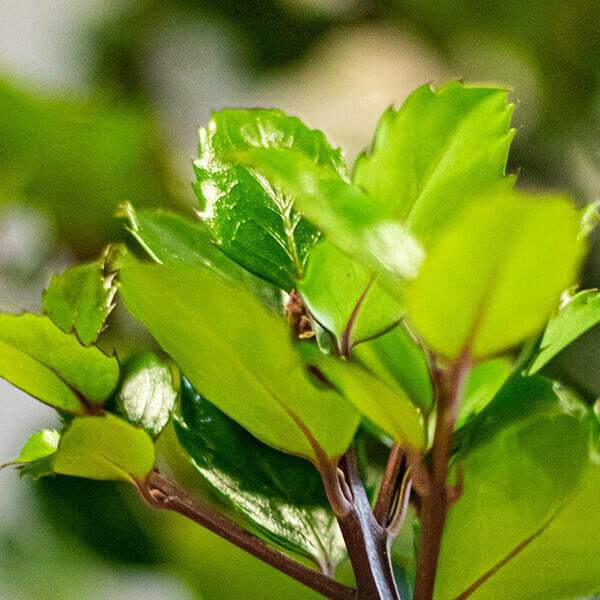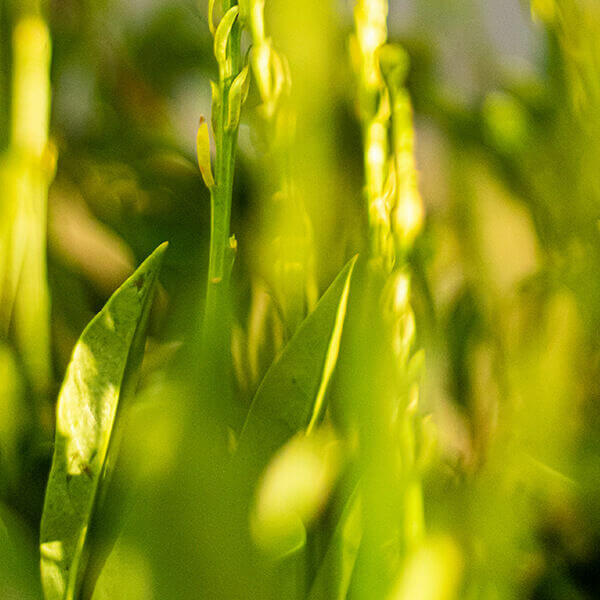Hedging Plants For Autumn Color
Hedging Plants For Autumn Color
Blog Article
Best Hedging Plants For Stylish Gardens
Improve your garden's appeal with lush hedge ranges such as Yew (Taxus), Thuja, Laurel, Photinia, and Bamboo, celebrated for their structural integrity and ecological benefits.
Yew and Thuja offer evergreen protection and winter durability, while Laurel uses fast development and broad, fragrant leaves.
Photinia includes seasonal charm with its dynamic red foliage, and Bamboo provides a low-maintenance, serene atmosphere.
These hedges enhance air quality, decrease sound, and create tranquil, private areas.
Correct planting, spacing, and maintenance make sure vigorous growth and eco-friendly harmony.
Check out how these lavish varieties can raise your garden's beauty and well-being.
Secret Takeaways
Change Your Garden With Lush Hedge Varieties
- Select Yew for its dense, evergreen growth and unequaled longevity.
- Select Laurel for its quick development and broad leaves, ensuring quick privacy.
- Select Photinia for its dynamic seasonal foliage, which turns a striking dark red.
- Make use of Bamboo for a low-maintenance, winter-hardy hedge with visual appeal.
- Area plants 2-3 per meter and prune frequently for optimum development and health.
Popular Hedge Plants
When transforming a garden with lush hedge varieties, it's vital to consider popular hedge plants such as Yew, Thuja, Laurel, and Photinia due to their distinct qualities and advantages.
Yew (Taxus) is highly esteemed for its longevity and dense, green growth, making it a prime choice for enduring landscapes.
Thuja is noted for its evergreen foliage and robust winter season strength.
Photinia includes seasonal vibrancy with red leaves that darken gradually, producing dynamic visual appeal.
Laurel provides rapid development and fragrant, broad leaves, ideal for quick privacy.
Furthermore, Bamboo is an outstanding choice for ambiance, using a low-maintenance, winter-hardy alternative that improves the garden's aesthetic with its stylish, swaying canes.
These choices accommodate a variety of horticultural requirements and preferences.
Benefits of Garden Hedges
Garden hedges use a wide variety of benefits, making them a valuable addition to any landscape. These natural barriers are cost-efficient to execute and provide substantial wind security, boosting air flow and contributing to sound decrease. The dense foliage of hedges like Thuja and Beech makes sure privacy by blocking exposure, creating a remote and tranquil environment.
Hedges also play a crucial function in microclimate regulation, offering a stable environment that promotes plant development and reduces temperature level fluctuations. Their detailed leaf structures filter pollutants, enhancing air quality and adding to a healthier garden community.
Additionally, hedges master noise decrease, absorbing and deflecting sound waves to lower ambient sound levels. This double performance of supplying both visual and acoustic personal privacy enhances the general harmony and aesthetic appeal of any garden.
Planting and Maintenance Tips
For an effective hedge, meticulous preparation of the planting area is essential. Make sure the soil has correct pH and drainage to support strong root development.
Space the plants properly for the picked types. Water the hedge frequently during its initial growth phase, adjusting as needed with seasonal changes.
Execute a methodical insect control and disease avoidance technique, utilizing natural or chemical treatments when needed. Routinely examine for aphids, mites, and fungal infections.
Apply mulch to retain moisture and suppress weeds. Seasonal pruning promotes dense growth and air circulation, essential for plant health.
Following these standards will assist you cultivate a dynamic, properly maintained hedge that improves the charm of your garden.
Spacing and Cutting Standards
Spacing and Cutting Guidelines
Proper spacing and cutting are crucial for cultivating healthy, aesthetically appealing hedges. Sufficient spacing guarantees each plant gets enough nutrients, light, and airflow.
Follow these guidelines for optimal hedge upkeep:
- Spacing: Position hedge plants 2-3 plants per meter to encourage robust growth.
- Pruning Strategies: Routine pruning is important for maintaining wanted hedge height and shape. Trim new development in summertime and cut down older wood throughout winter season.
- Seasonal Care: Adjust cutting schedules and techniques according to seasonal requirements to guarantee plant health.
- Hedge Height: Regularly screen and trim to keep the desired hedge height and achieve uniform visual appeals.
Complying with these steps will guarantee your hedge flourishes, boosting both the appeal and functionality of your garden.
Picking the Right Hedge
Picking the Right Hedge
Picking the suitable hedge includes evaluating elements such as fully grown height, foliage density, and environmental durability. Effective hedge plant choice requires comprehending each types' growth qualities and site-specific versatility.
For example, Yew (Taxus) uses outstanding durability and thick growth, while Thuja is significant for its winter season strength. Additionally, considering maintenance requirements is vital; fast-growing species like Laurel or Privet demand regular trimming, whereas low-maintenance choices like Bamboo or Ivy may be more effective for those looking for very little maintenance.
Ecological aspects such as soil type, light availability, and moisture conditions should also guide the selection procedure. This mindful technique makes sure the picked hedges will grow, supplying both visual and practical advantages to the garden landscape.
Shipment and Planting Advice
To ensure your hedge plants flourish, they ought to be delivered by specialized carriers and planted quickly upon arrival.
Follow these essential actions for successful planting:
- Soil Preparation: Enhance the soil with organic matter to enhance drainage and nutrient material.
- Planting Depth: Develop a trench two times the width and equal to the depth of the root ball.
- Watering Techniques: Water completely after planting, keeping the soil regularly damp but not saturated.
- Mulching: Apply a layer of mulch to keep moisture and suppress weeds.
Consumer Assistance and Service
Provided the vital role of prompt help in horticultural pursuits, our client support team is readily available 6 days a week through telephone, email, and social networks to offer expert recommendations and promptly deal with any issues. Their commitment to fast reaction times ensures client complete satisfaction by dealing with questions associated with plant health, optimum planting methods, and upkeep schedules.

This comprehensive support group, strengthened by an outstanding 9.3/ 10 customer ranking, highlights our commitment to boosting the gardening experience for each client.
Regularly Asked Questions
The Length Of Time Does It Take for Hedge Plants to Develop?
Hedge plants normally require one to three years to end up being completely developed, with the exact period differing by types and growing conditions.
Reliable care during this important duration is important for robust growth. Consistent watering, watchful weed control, and suitable fertilizer application are pivotal in promoting strong root advancement.
For example, fast-growing species like Laurel might establish more quickly, while slower-growing ranges such as Yew might take longer. Persistent upkeep speeds up the establishment process, leading to thick and healthy hedges.
What Are the Best Hedge Plants for Personal Privacy?
The concern of the best hedge plants for privacy includes examining evergreen and deciduous choices.
Evergreen hedges like Thuja, Laurel, and Cypress offer year-round coverage, ensuring constant privacy.
On the other hand, deciduous hedges such as Beech use seasonal personal privacy, shedding leaves in cooler months.
Key maintenance pointers for personal privacy hedges consist of regular trimming, fertilizing in spring, and proper spacing-- generally 2 to 3 plants per meter.
Furthermore, consistent watering and persistent weed removal are important for promoting healthy, thick development.
Can Hedge Plants Draw In Wildlife to My Garden?
Yes, hedge plants can draw in wildlife to your garden by offering vital benefits like shelter, food, and nesting sites, thus enhancing local biodiversity. For instance, yew, holly, and laurel are excellent for drawing in birds, while ivy supports a variety of bugs.
However, it's crucial to note that there are some drawbacks, such as increased upkeep to manage pests and regular maintenance. Carefully picking and keeping hedge varieties can help stabilize these benefits and drawbacks, ultimately promoting a sustainable and vibrant environment in your garden.
Exist Any Blooming Hedge Plants Available?
Yes, there are flowering hedge plants offered that can enhance the charm of your garden.
For example, Elaeagnus, likewise called Olive Willow, produces fragrant white flowers in the fall, including a touch of elegance.
Photinia, another popular option, showcases vibrant red leaves that develop into a rich green, producing a dynamic visual impact throughout the seasons.
To ensure these plants prosper, it's vital to practice appropriate pruning techniques and seasonal upkeep, such as cutting new development in the summer and cutting back in the winter season.
These measures will help keep the health and aesthetic appeal of your flowering hedges.
How Do I Avoid Bugs in My Hedge Plants?
To prevent insects in hedge plants, use natural pest control techniques and keep proper hedge care. Introduce helpful insects like ladybugs, which take advantage of hazardous bugs, to create a balanced community.
Frequently inspect your hedges for signs of problem and quickly eliminate any affected parts Browse this site to avoid the spread. Make sure the health of your hedges by using well balanced fertilizers and supplying adequate water.
Utilize mulching to retain soil moisture and proper spacing to decrease plant stress and promote robust development. These practices collectively help in lessening insect problems and preserving a healthy hedge.
Conclusion
In essence, selecting the best hedge varieties such as Yew, Thuja, and Laurel can transform any garden into a tranquil haven. These plants provide year-round plant, boost visual appeal, and offer practical advantages like sound decrease and wind security.
Proper planting techniques, precise spacing, constant watering, and seasonal cutting are crucial for optimal growth.
Trustworthy shipment services and expert customer support ensure a smooth experience from purchase to planting, making it easier than ever to elevate your outside area.
Garden hedges offer a multitude of advantages, making them a valuable addition to any landscape. These natural barriers are cost-effective to carry out and offer significant wind defense, enhancing air blood circulation and contributing to sound reduction. The thick foliage of hedges like Thuja and Beech ensures personal privacy by obstructing exposure, creating a serene and remote environment.

Pruning Strategies: Routine pruning is vital for preserving preferred hedge height and shape. Trim new development in summer season and cut back older wood throughout winter.
Report this page